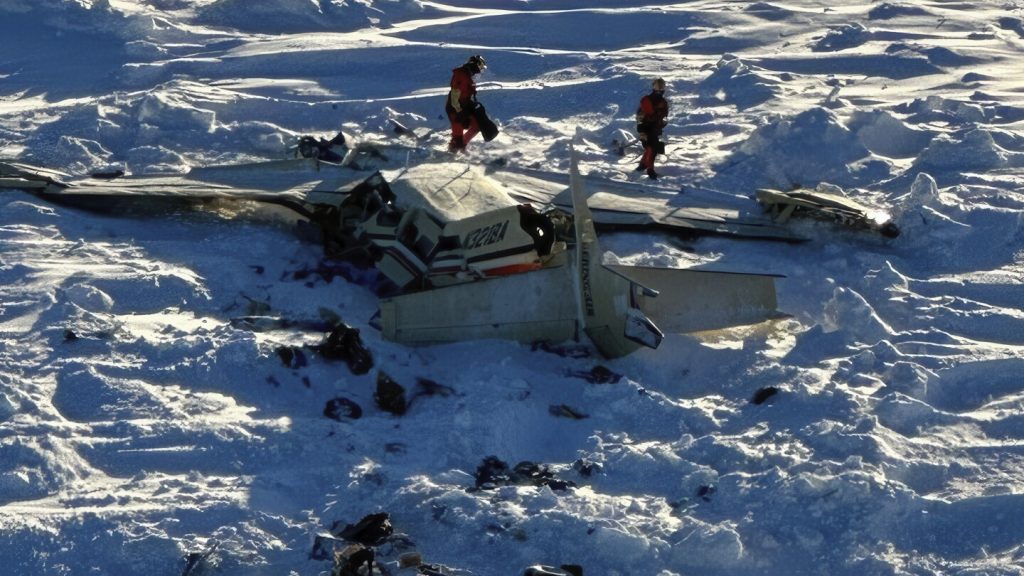Plane Crash in Alaska: A Tragic Loss in the Bering Sea
Overview of the Tragedy
A devastating plane crash occurred off the coast of western Alaska, claiming the lives of 10 people. The single-engine turboprop Cessna Caravan, operated by Bering Air, was on a routine commuter flight from Unalakleet to Nome when it disappeared on Thursday afternoon. Authorities lost contact with the aircraft less than an hour after takeoff, sparking a massive search and rescue operation. By Friday, rescuers located the wreckage on a drifting ice floe in the icy Bering Sea, approximately 30 miles southeast of Nome. The remains of the victims and the wreckage were subsequently recovered and transported to a hangar in Nome for further investigation. This incident marks one of the deadliest aviation accidents in Alaska in the past 25 years.
The Importance of Air Travel in Alaska
Alaska’s vast and remote landscape makes air travel a critical mode of transportation for its residents. Many communities, including Unalakleet and Nome, are not connected to the state’s limited road system, relying heavily on small commuter planes to transport people, goods, and essential supplies. Flying is not just a convenience but a necessity in Alaska, where the harsh climate and geography pose significant challenges to other forms of travel. This tragedy underscores the risks associated with air travel in such a challenging environment, even as it remains a lifeline for many Alaskans.
Investigation into the Cause of the Crash
The National Transportation Safety Board (NTSB) and other agencies are actively investigating the cause of the crash. Radar data revealed that the plane rapidly lost altitude and speed before disappearing, but no distress signals were sent or received. Weather conditions in the region were hazardous, with moderate icing possible at altitudes between 2,000 and 8,000 feet. However, the Cessna Caravan was equipped with an anti-icing system, which will be thoroughly examined as part of the investigation. NTSB Chair Jennifer Homendy emphasized that no conclusions have been drawn yet, and the focus is on analyzing the wreckage to determine the cause.
Victims of the Tragedy: A Closer Look
The crash claimed the lives of nine passengers and the pilot, whose ages ranged from 34 to 58. Among the victims were Rhone Baumgartner, 46, and Kameron Hartvigson, 41, both from Anchorage, who were in Unalakleet to work on a critical water plant system. Talaluk "TK" Katchatag, a 34-year-old Unalakleet resident, was also killed. His sister described him as a kind and wise individual who left a lasting impact on his community. Bering Air has established a hotline to provide support and updates to the families of the victims, expressing deep condolences for the profound loss caused by the crash.
Recent Aviation Incidents Across the U.S.
This tragic event is part of a troubling series of aviation incidents in the United States. Just eight days prior, a commercial jetliner and an Army helicopter collided near the nation’s capital, resulting in 67 fatalities. Additionally, a medical transport plane crashed in Philadelphia, killing six people on board and one person on the ground. While these incidents are unrelated, they highlight the ongoing challenges and risks associated with air travel, prompting calls for increased safety measures and rigorous investigations.
Recovery Efforts and Community Response
Crews worked tirelessly to recover the remains of the victims and the wreckage before harsh weather conditions, including high winds and snow, could complicate the process. The wreckage was transported to a hangar in Nome, where it will be examined as part of the ongoing investigation. Local, state, and federal agencies collaborated in the recovery efforts, demonstrating the strength and resilience of the Alaskan community in the face of tragedy. As the investigation unfolds, the focus remains on supporting the families of the victims and ensuring that such a devastating event is never repeated.












